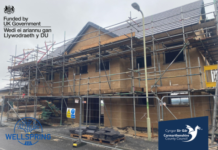- London has seen a significant decline in average room rents for four consecutive quarters, down by 8% between Q1 2020 and Q1 2021
- Every London region was down year on year (YOY) but the West Central region saw the biggest drop in rents (-20%), followed by East Central (-17%) and West (-11%)
- Excluding London, UK room rents are up 1% YOY
- Out of the UK’s 50 largest towns and cities, London saw the biggest drop in demand vs supply, down 23% YOY
One year on from the beginning of the pandemic, London’s reversal of fortunes in the rental market continues, with room rents now down significantly for the fourth consecutive quarter. In fact, average London room rents dropped by 8%, from £771 in Q1 2020 to £706 in Q1 2021.
According to new figures released by SpareRoom, room rents in every London region were down year on year (YOY). The West Central area of London saw the biggest drop (-20%), followed by East Central (-17%) and West (-11%).
The London postcodes where room rents have reduced the most include SW1 (Westminster/Belgravia/Pimlico) -25%, W1 (West End/Soho) -23% and W8 (Holland Park) -21%, dropping from £1,117, £1,169 and £1,144 to £833, £904 and £900 respectively.
The negative trend in the capital continues to pull down average national rents, despite several regions of the UK experiencing rental increases. Excluding London, UK rents are up 1% YOY. In fact, the only UK region apart from London to experience a decrease in room rents was the West Midlands, down 1%.
Alongside London’s sustained decline in rents, SpareRoom research reveals a marked fall in demand vs supply for rentals across the capital since the start of the pandemic. Out of the UK’s 50 largest towns and cities, London has experienced the biggest drop in demand vs supply, down 23% YOY. In particular, East Central London has suffered the sharpest fall, down by almost half (-42%), followed by the South East (-40%) and West Central London (-40%).
However, London’s loss is somewhere else’s gain. Ipswich experienced the biggest increase in demand vs supply, up 81% YOY. This was closely followed by Poole and Blackpool, up 71% and 59% respectively. Nevertheless, drop in demand vs supply isn’t a London-only occurrence, with Cambridge (-17%), Aberdeen (-14%), Belfast (-13%) and York (-13%) all joining London (-23%) in experiencing large decreases.
The cheapest areas to rent a room in London continue to be SE2/Abbey Wood (£531) and E6/East Ham (£545), with E12/Manor Park (£547) also joining the list in Q1 2021. At the other end of the scale, the most expensive place to rent a room in the capital was SW7 (South Kensington/Knightsbridge), with an average monthly room rent of £1,082. Followed by WC2 (Strand/Holborn) at £989 and SW3 (Chelsea) at £971.
East London continues to be the most popular London postcode with the top two spots going to E14 (Canary Wharf/Docklands) and E1 (Shoreditch/Whitechapel), followed by North London’s N1 (Angel/Islington/Canonbury).
Across all UK regions, East Anglia and the South West saw the biggest increase in room rents YOY, up 4%. These regions are closely followed by the East Midlands, Northern Ireland and Yorkshire and Humberside, all up 3%.
In Q1 2021, the most expensive areas to rent outside of the capital were Twickenham (£698), Kingston upon Thames (£696) and Barnet (£642) – all in close proximity to the city. Meanwhile, Bootle, Sunderland and Londonderry were the cheapest areas to rent a room in the UK at £335, £341 and £347 respectively.
The data is the latest to be compiled as part of SpareRoom’s Quarterly Rental Index: a comprehensive overview of how the room rental market is performing across the country, based on over 450,000 room listings.
Matt Hutchinson, SpareRoom Director comments: “One year on from the start of the pandemic there’s no sign yet that the London market is recovering. However, as the vaccine rollout continues and the UK starts to open up more, there may well be pent up demand ready to hit the market over summer.
Where people choose to live post-pandemic remains to be seen. The rise in remote working may mean other areas of the UK continue to see increased demand. However, as the capital’s key industries, like tourism, hospitality and entertainment start to recover, they’ll mean the return of huge numbers of jobs. As we know, work is one of the biggest drivers in the rental market.”
Help keep news FREE for our readers
Supporting your local community newspaper/online news outlet is crucial now more than ever. If you believe in independent journalism, then consider making a valuable contribution by making a one-time or monthly donation. We operate in rural areas where providing unbiased news can be challenging. Read More About Supporting The West Wales Chronicle


























